如何写出高质量的PHP代码
发布:smiling 来源: PHP粉丝网 添加日期:2022-07-01 08:27:38 浏览: 评论:0
前言
经常会有人问
目录如何设计比较好?
代码如何分布好?
怎么写一个可维护的项目?
“烂”项目我也没少写,以下是参考互联网各大佬的文章总结及个人开发经验而来.
Controller
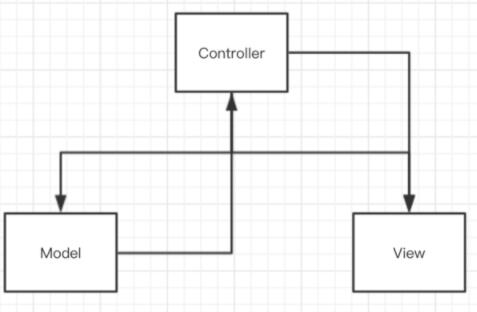
Controller顾名思义是控制器,在入门PHP的时候,就知道Controller代表MVC中的C层,MVC本身的概念就代码分离,教你如何如何将业务分开,但面临着业务的不断发展,代码的复杂度也随之提高,功能与功能之间的链接错综复杂,最后你的MVC就变成了下图,所以仅仅依托MVC的设计思想已经无法支撑不断发展的业务。
现在我们将Controller的任务和能力重新定义,控制器仅仅控制Http Reqeust的请求,这样就符合了SOLID 单一功能原则.
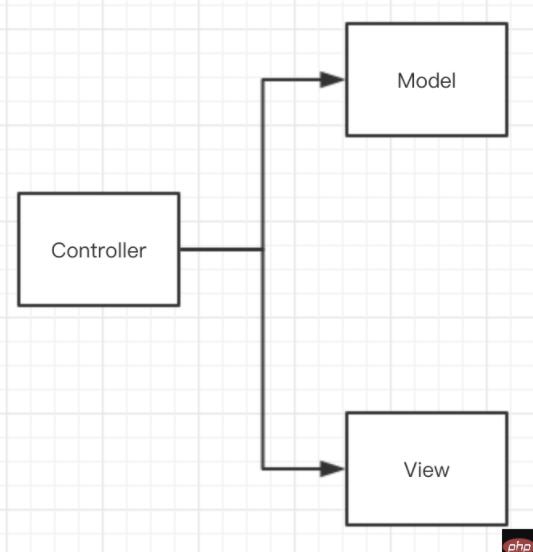
直接将业务代码写在Controller中,会使得代码及其臃肿,不易于维护和扩展
- <?php
- namespace App\Http\Controller;
- class UserController extends Controller{
- public function register(Request $request){ $user = new User(); $user->username = $request->input('username'); $user->password = $request->input('password'); $result = $user->save(); return $result;
- }
- }
这时就应该思考如何分离业务代码,我们引入Service的概念
Service
Service本身译为服务
将外部方法,公共方法注入到Service
将Service注入到控制器
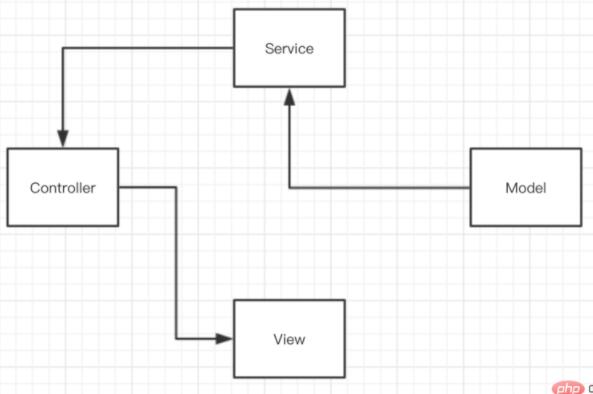
像上图这样
UserController
- <?php
- namespace App\Http\Controller;
- class UserController extends Controller{
- public $request;
- protected $userService;
- public function __construct(Request $request, UserService $userService)
- { $this->request = $request;
- $this->userService = $userService;
- }
- public function register()
- {
- //... validation return $this->userService->register ($this->request->all());
- }
- }
UserService
- <?php
- namespace App\Service;
- class UserService{
- public function register($data)
- { $username = $data['username']; $password = $data['password'];
- $password = encrypt ($password);
- $user = new User(); $user->username = $username; $user->password = $password; $result = $user->save(); return $result;
- }
- }
到现在为止,我们至少将业务与请求彻底分开了。但还是不如人意,如果把所有的业务及CURD全部写在Service中,那只不过是将Controller的臃肿转移到了Service,那Service就没有什么存在意义了。 所以我们需要继续分割Service,将对数据库的R操作独立出来,因为CUD的操作基本是一贯不变的,而R操作根据业务的复杂度则变的多姿多彩。所以独立R操作。这个时候我们引用Repository的概念。
Repository
我们使用Repository辅助Model,将相关的查询逻辑封装到不同的repository中,方便逻辑代码的维护
符合SOLID的单一原则
符合SOLID的依赖反转
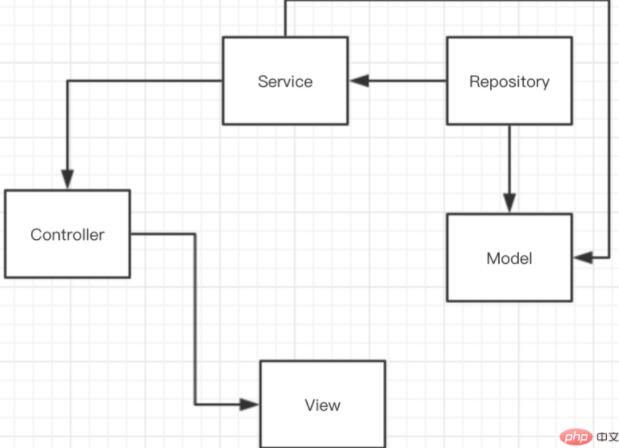
UserController
- <?php
- namespace App\Http\Controller;
- class UserController extends Controller{
- public $request;
- protected $userService;
- public function __construct(Request $request, UserService $userService)
- { $this->request = $request;
- $this->userService = $userService;
- }
- public function getUserInfo()
- {
- //... validation return $this->userService->getUserInfo ($this->request->all());
- }
- }
UserService
- <?php
- namespace App\Service;
- class UserService{
- public $userRepository;
- public function __construct(UserRepository $userRepository){ $this->userRepository = $userRepository;
- }
- public function getUserInfo()
- { return $this->userRepository->getUserInfo($data);
- }
- }
UserRepository
- <?php
- namespace App\Repository;
- class UserRepository{
- public function getUserInfo($data)
- { $userId = $data['user_id']; $result = User::where('id',$userId)->first();
- return $result;
- }
- }
解决了R的问题,有人就问了,难道因为CUD比较统一简单就可以放在一起了吗?答案是NO,我们引用一个新的名词Action。
Action
这是看了@Charlie_Jade的文章才学到的
独立每个操作文件,例如CreateUser,DeleteUser,UpdateUser
符合SOLID的单一原则
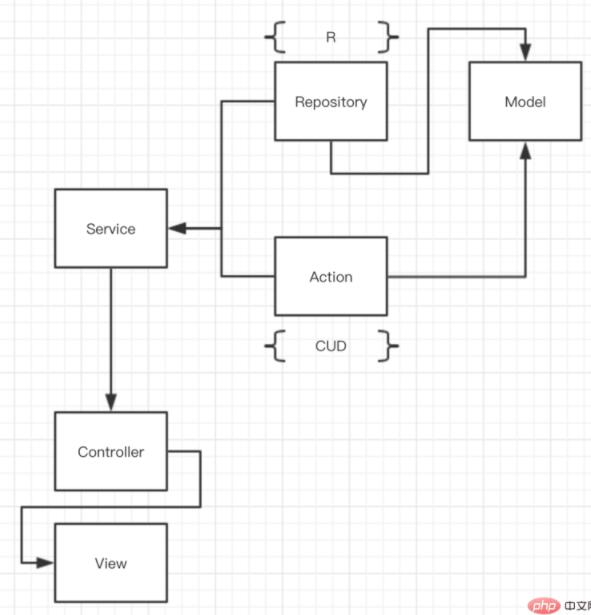
UserController
- <?php
- namespace App\Http\Controller;
- class UserController extends Controller{
- public $request;
- protected $userService;
- public function __construct(Request $request, UserService $userService)
- { $this->request = $request;
- $this->userService = $userService;
- }
- public function register(){
- //... validation return $this->userService->register($this->request->all());
- }
- public function getUserInfo()
- { return $this->userService->getUserInfo ($this->request->all());
- }
- }
UserService
- <?php
- namespace App\Service;
- class UserService{
- public function getUserInfo(UserRepository $userRepository)
- { return $this->userRepository->getUserInfo($data);
- }
- public function register(){ $result = (new CreateUser())->execute($this->request->all());
- return $result;
- }
- }
UserRepository
- <?php
- namespace App\Repository;
- class UserRepository{
- public function getUserInfo($data)
- { $userId = $data['user_id']; $result = User::where('id',$userId)->first();
- return $result;
- }
- }
CreateUser
- <?php
- namespace App\Action;
- use App\Model\Member;
- class CreateUser extends CreateUserWallet
- {
- public function execute(array $data)
- { $models = new Member(); $models->tel = $data['tel']; $models->password = $data['password']; $result = $models->save ();
- return $result;
- }
- }
以上代码逻辑见下图
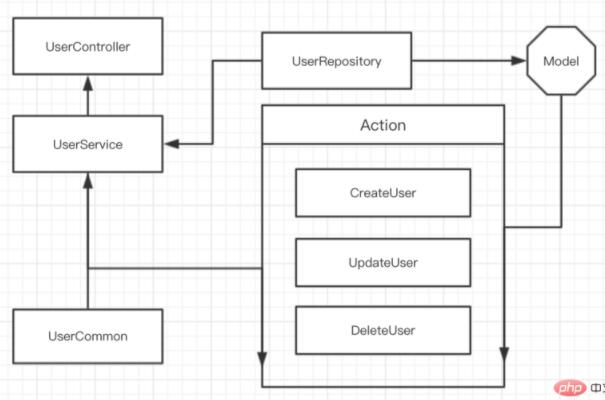
除模版(V)等HTML,JS等,还需要一些其他的规则,或者说是方式去实现一些代码的解耦合,以下不再提供代码案例。
Common
译为公共的,常用的,再部分开发中,你可能需要一些公共的方法(并非公共的类,例如邮件发送等,用他并不合适),比如查询用户余额,查询用户是否注册或者是否在线,生成订单号等。使用Common更要简单。他更像一个公共函数库的样子
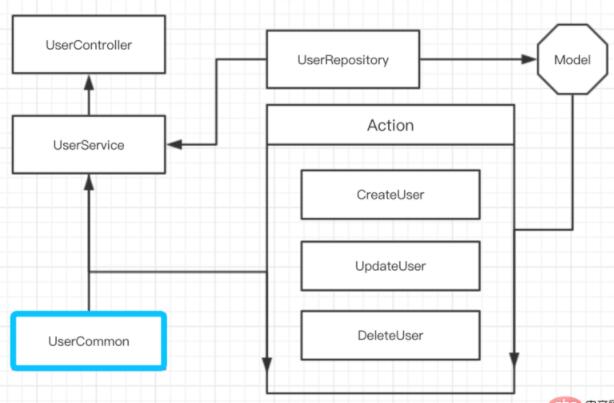
Event
不关心执行结果时可以选使用,不过Event的Listen也是提供了队列。
Exception
不要将你的所有错误提示都使用Return返回,很多时候你的返回未必是你的返回。
Tags: 高质量PHP代码
- 上一篇:php比Node.js好用的五大理由
- 下一篇:最后一页
推荐文章
热门文章
最新评论文章
- 写给考虑创业的年轻程序员(10)
- PHP新手上路(一)(7)
- 惹恼程序员的十件事(5)
- PHP邮件发送例子,已测试成功(5)
- 致初学者:PHP比ASP优秀的七个理由(4)
- PHP会被淘汰吗?(4)
- PHP新手上路(四)(4)
- 如何去学习PHP?(2)
- 简单入门级php分页代码(2)
- php中邮箱email 电话等格式的验证(2)
